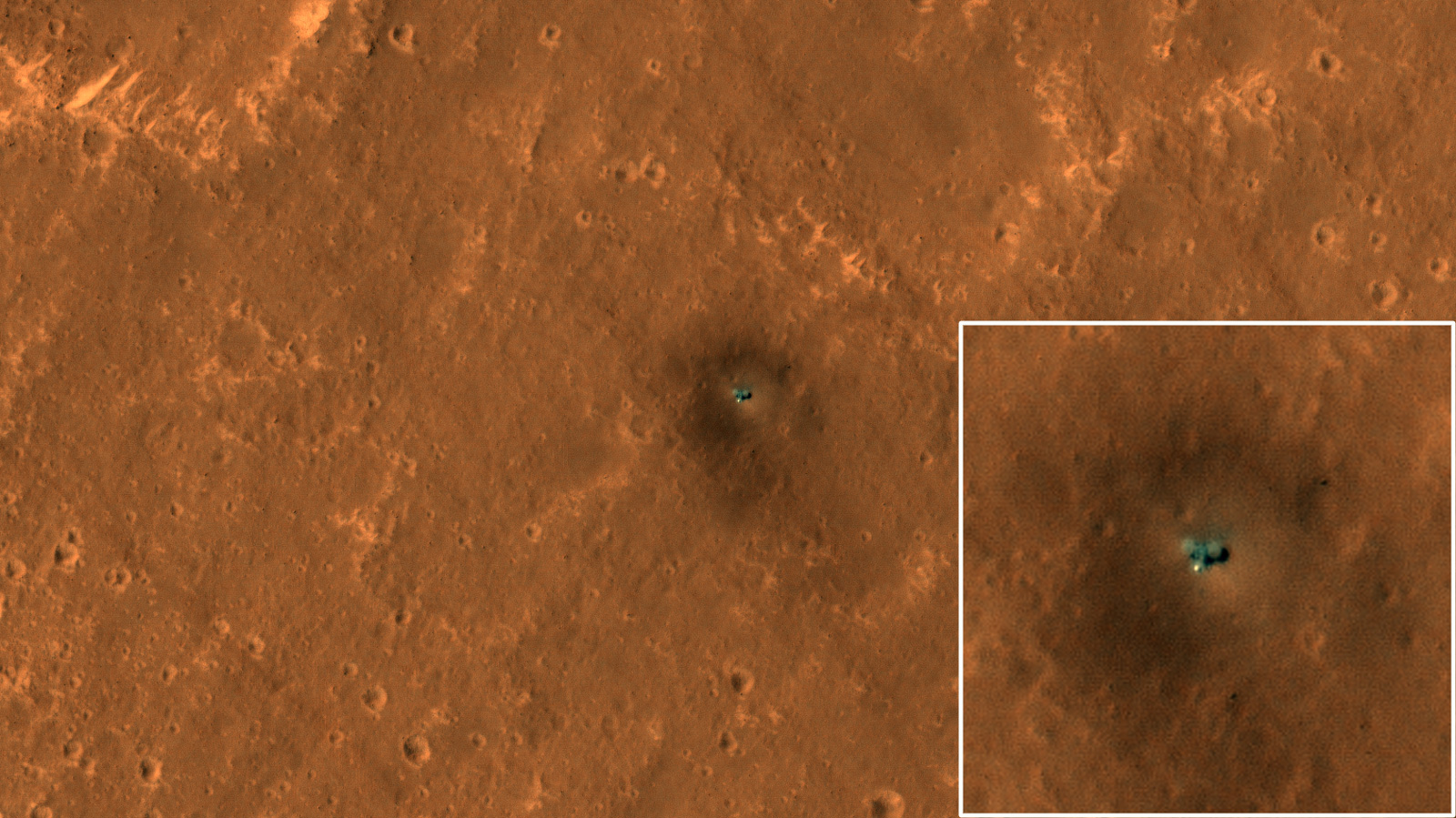
NASA’s Mars Reconnaissance Orbiter (MRO) is currently in orbit around the red planet and is snapping photos of its surface using an instrument called the High-Resolution Imaging Science Experiment (HiRISE). Recently, HiRISE imaged not just one but both of NASA’s missions which are on the planet right now.
First up, HiRISE took the image above showing the most detailed aerial view yet of the InSight lander. The greenish speck in the middle of the image is the landing site in the Elysium Planitia region, and you can see the two circular panels that the lander uses to collect solar power. Just below the lander, you can see the dome of the heat shield covering the seismometer which is listening out for marsquakes.
This is not the first time that HiRISE has spotted Curiosity on the surface of Mars. In an image released in July this year, HiRise saw Curiosity in a location called Woodland Bay, part of a region called the clay-bearing unit in Mount Sharp. That image was detailed enough that you could even make out Curiosity’s mast which holds instruments like the ChemCam for analyzing rock samples.
Curiosity is still in the clay-bearing now, though it will soon be moving on to a new area called the sulfate-bearing unit. Between May and July, the rover traveled 1,106 feet (337 meters) from Woodland Bay to a new location called Sandside Harbour. In the animation above, Sandside Harbour is in the middle near the bottom of the image, next to the dark patch of sand. Above the rover, you can even make out the tracks left by Curiosity as it moved through the area.
Curiosity is now collecting data about the composition of rocks in the area, in order to learn more about the history of water on Mars and whether the planet was ever capable of supporting life.
Editors' Recommendations
- NASA is looking for volunteers for yearlong simulated Mars mission
- NASA stops speaking to its Mars robots, but they haven’t fallen out
- Map of Mars shows the location of ice beneath the planet’s surface
- Curiosity rover battles up a 23-degree slope in its exploration of Mars
- See a postcard from Mars taken by the Curiosity rover





